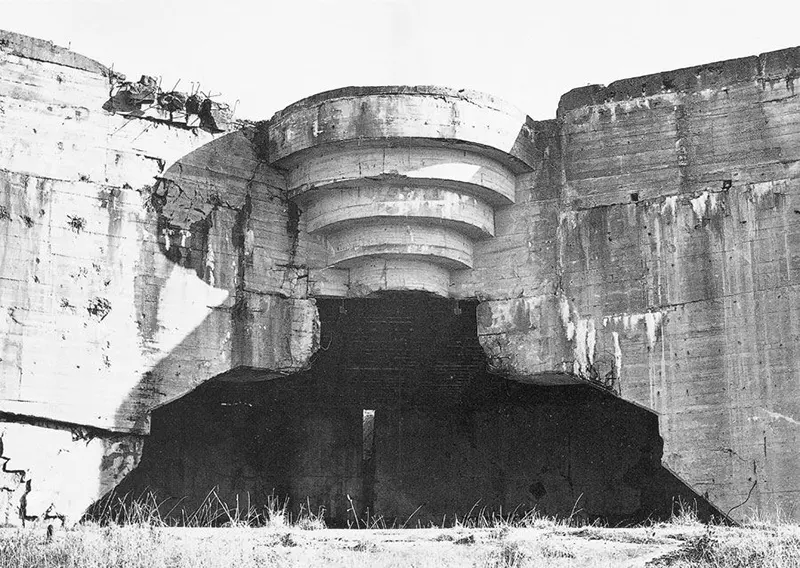 Field Marshal Erwin Rommel famously declared and predicted: “The war will be won or lost on the beaches. We’ll have only one chance to stop the enemy and that’s while he’s in the water… struggling to get ashore… everything we have must be on the coast… the first twenty-four hours of the invasion will be decisive… for the Allies, as well as Germany, it will be the longest day”.
Field Marshal Erwin Rommel famously declared and predicted: “The war will be won or lost on the beaches. We’ll have only one chance to stop the enemy and that’s while he’s in the water… struggling to get ashore… everything we have must be on the coast… the first twenty-four hours of the invasion will be decisive… for the Allies, as well as Germany, it will be the longest day”.
These photos show the Atlantic Wall fortifications during the construction phase and later after the war ended. It was truly an amazing engineering feat. Most of the images were taken by Paul Virilio and published in his 1975 book Bunker Archeology.

A British soldier poses next to the recently captured German 380 mm gun Todt Battery at Cap Gris Nez.
The Atlantic Wall (or as the Germans called it Atlantikwall) was an extensive system of coastal defenses and fortifications built by Nazi Germany between 1942 and 1944 along the coast of continental Europe and Scandinavia as a defense against an anticipated Allied invasion of Nazi-occupied Europe from the United Kingdom, during World War II.
The manning and operation of the Atlantic Wall was administratively overseen by the German Army, with some support from Luftwaffe ground forces.
The Kriegsmarine (German Navy) maintained a separate coastal defense network, organized into a number of sea defense zones.
Hitler ordered the construction of the fortifications in 1942 through his Führer Directive No. 40. More than half a million French workers were drafted to build it.
The wall was frequently mentioned in Nazi propaganda, where its size and strength were usually exaggerated. The fortifications included colossal coastal guns, batteries, mortars, and artillery, and thousands of German troops were stationed in its defenses.

Field Marshal Erwin Rommel visiting the Atlantic Wall defences near the Belgian port of Ostend, part of the fortifications which today comprise the Atlantic Wall Open Air Museum at Raversijde
The Regelbau (standard build) system used books of plans for each of over 600 approved types of bunker and casemate, each having a specific purpose, having been updated as enemy constructions were overrun and examined, even testing some to destruction for effectiveness.
They incorporated standard features, such as an entrance door at right angles, armored air intake, 30-millimeter (1.2 in) steel doors, ventilation and telephones, 7 internal walls lined with wood, and an emergency exit system. There were over 200 standardized armor parts.
The standardization greatly simplified the manufacture of equipment, the supply of materials, and the budgetary and financial control of the construction as well as the speed of planning for construction projects.
To offset shortages, captured equipment from the French and other occupied countries armies were incorporated in the defenses, casemates designed for non-German artillery, anti-tank and machine guns, and the use of turrets from obsolete tanks in tobrukstand pill boxes.
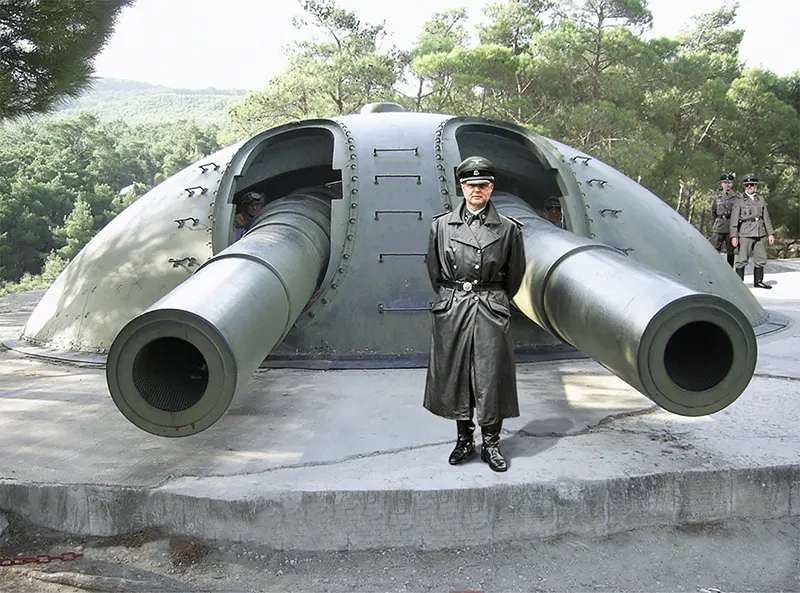 Early in 1944, with an Allied invasion of Nazi-occupied Europe becoming ever more likely, Field Marshal Erwin Rommel was assigned to improve the wall’s defenses.
Early in 1944, with an Allied invasion of Nazi-occupied Europe becoming ever more likely, Field Marshal Erwin Rommel was assigned to improve the wall’s defenses.
Believing the existing coastal fortifications to be entirely inadequate, he immediately began strengthening them. Rommel’s main concern was Allied air power.
He had seen it first-hand when fighting the British and Americans in North Africa, and it had left a profound impression on him. He feared that any German counterattack would be broken up by Allied aircraft long before it could make a difference.
Under his direction, hundreds of reinforced concrete pillboxes were built on the beaches, or sometimes slightly inland, to house machine guns, antitank guns, and light and heavy artillery.
Land mines and antitank obstacles were planted on the beaches, and underwater obstacles and naval mines were placed in waters just offshore.
Little known was that touch sensitive mines were placed atop the beach obstacles. The intent was to destroy the Allied landing craft before they could unload on the beaches.
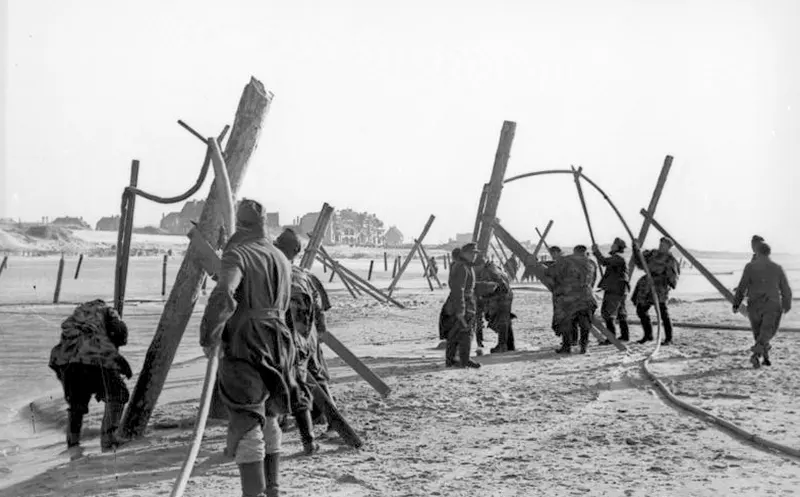
German soldiers placing landing craft obstructions, 1943.
Immediately after the war, there was little interest in preserving the wall due to the negative memories associated with the Nazi occupation.
Some of the beach fortifications have toppled or are underwater, while those further inland still exist mainly due to their location.
One of the best-preserved parts is the Todt Battery. In 2011, renewed efforts to preserve the wall were spearheaded by organizations in Germany, the Netherlands, and the United Kingdom.
The question has been raised over whether France should declare the wall a National Monument to ensure it is preserved; however, no government so far has envisaged this.

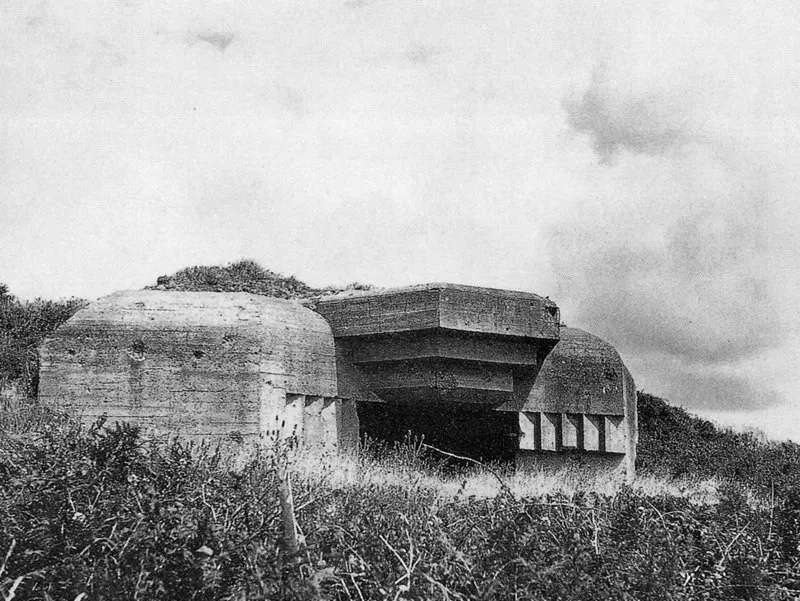

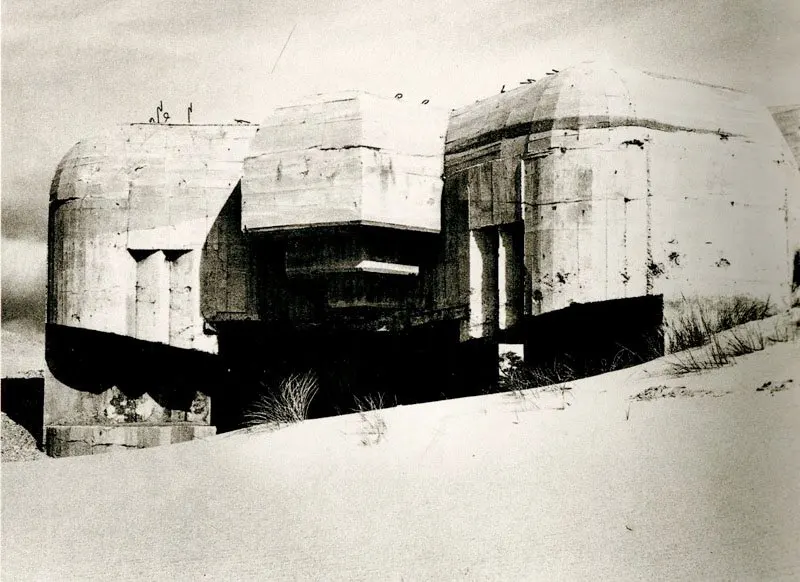
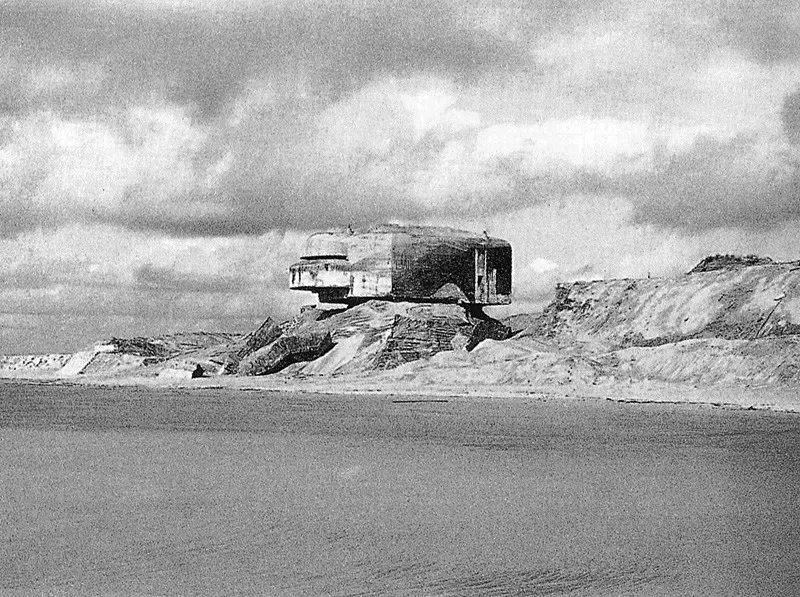


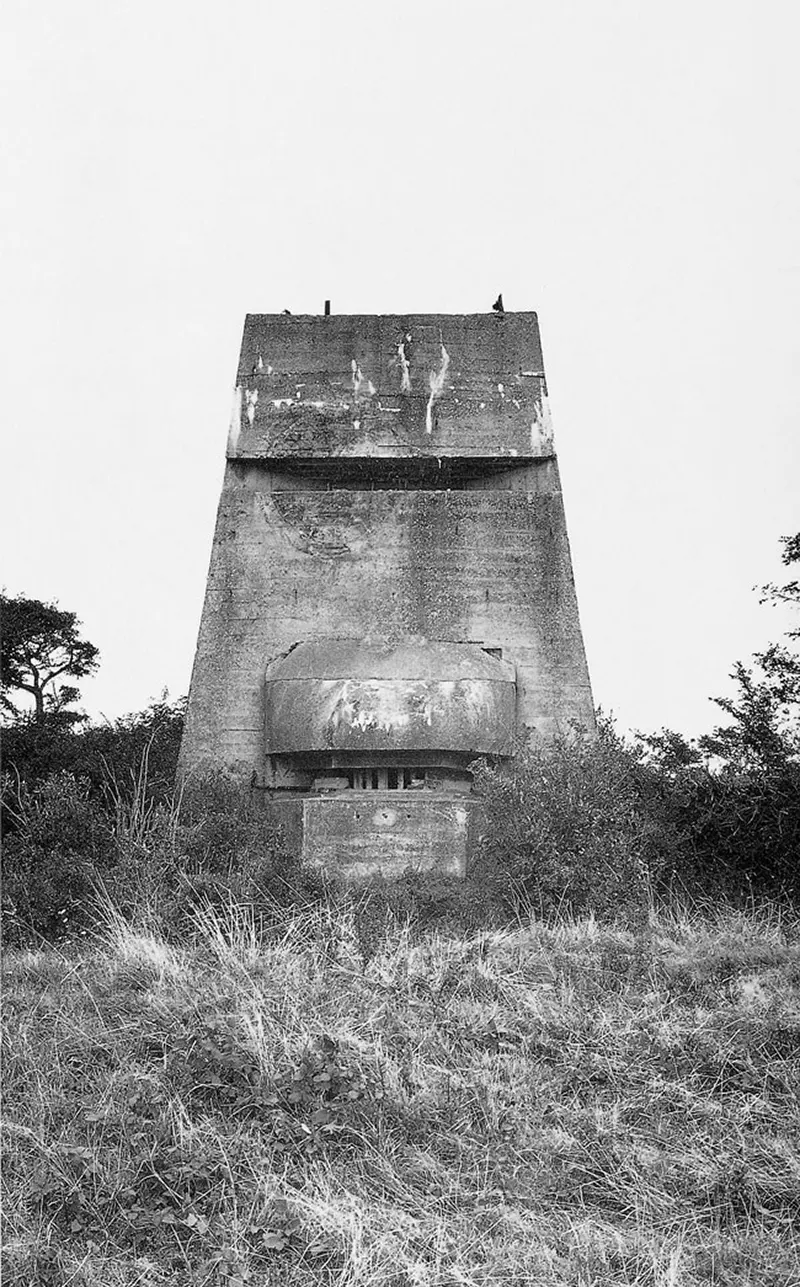

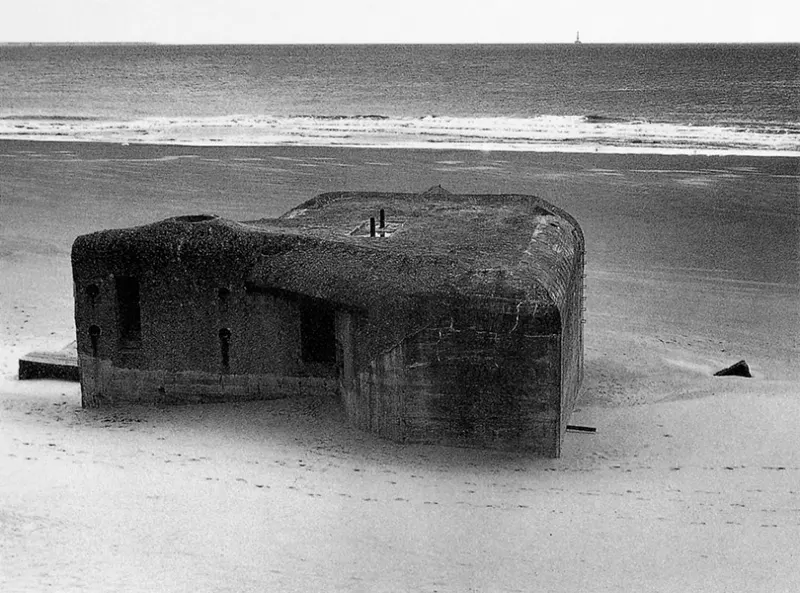

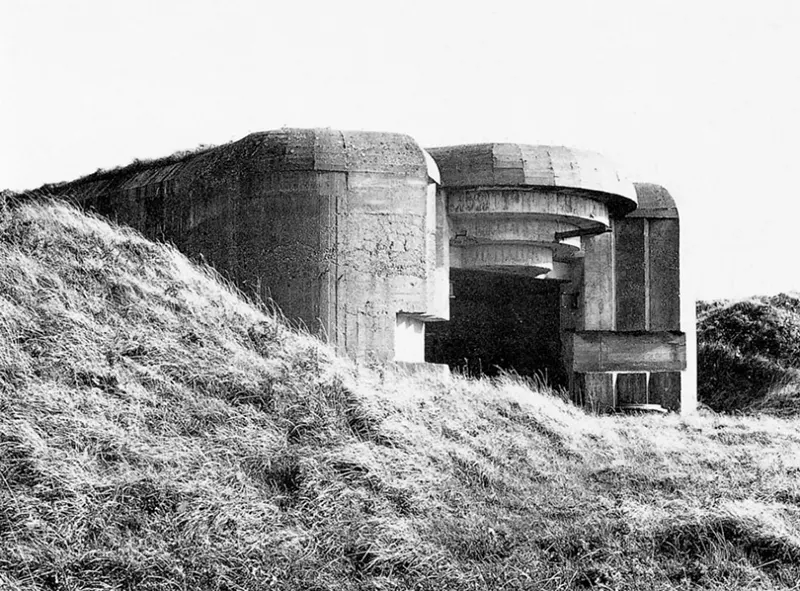

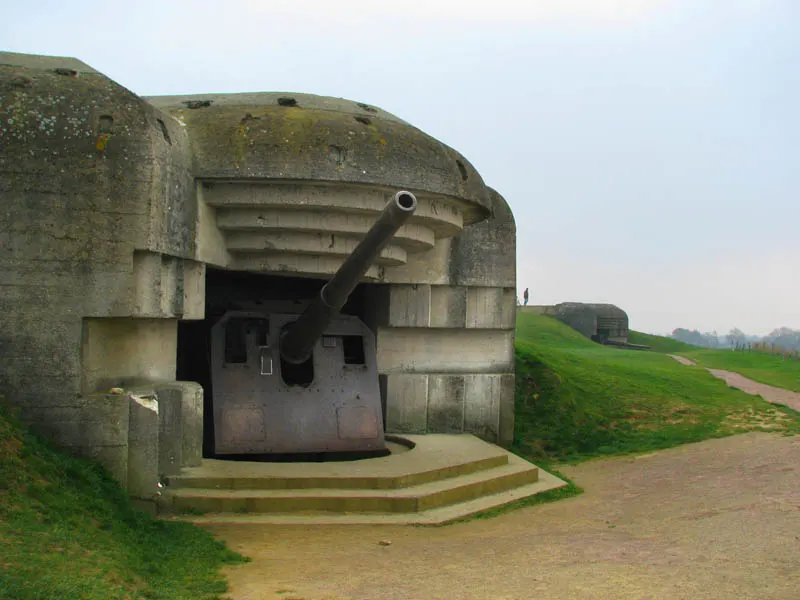

One of the casemates of the Longues-sur-Mer battery in Normandy, destroyed by naval gunfire during the Allied landings
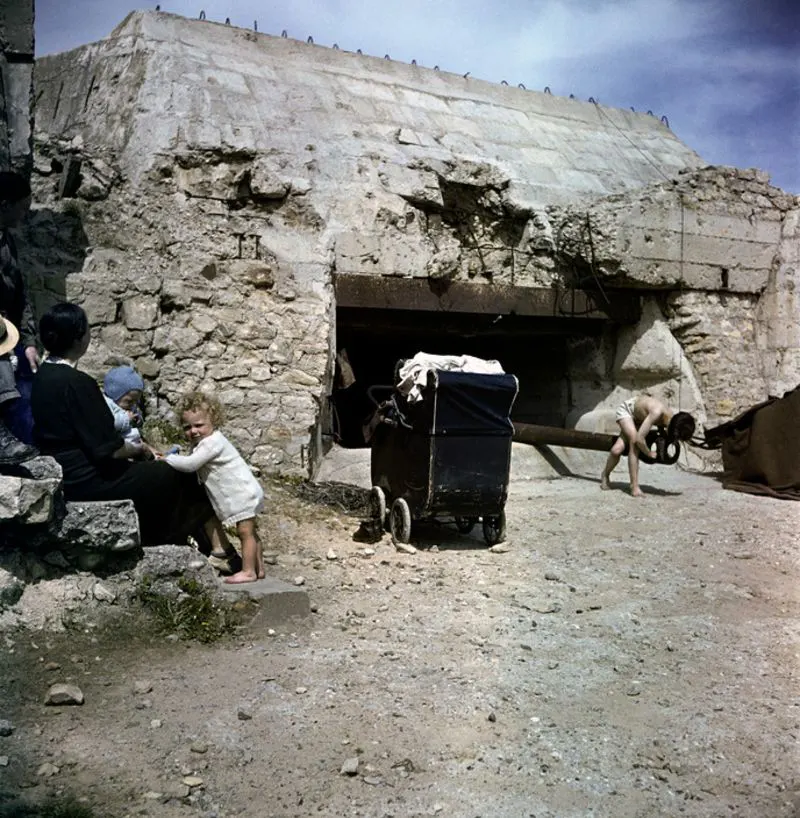


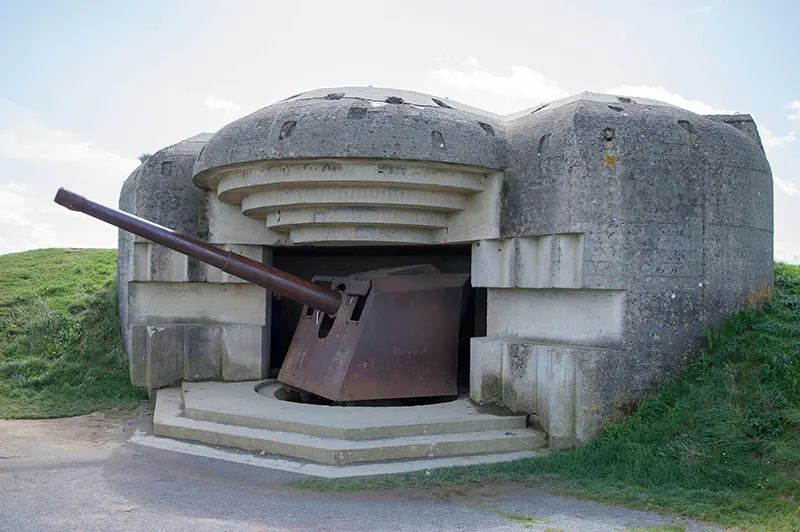
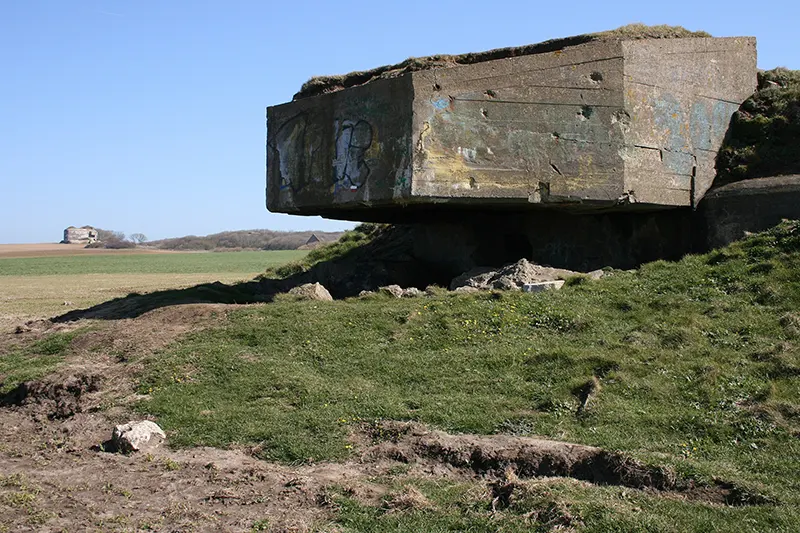
(Photo credit: Wikimedia Commons / Britannica / Flickr / Pinterest / Paul Virilio: Bunker Archeology).

